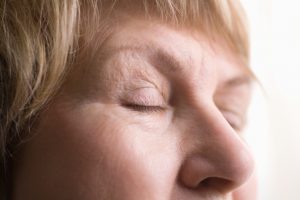 Meibomian gland dysfunction (MGD) is when the oil glands – Meibomian glands – do not secrete enough oil or when the oil secreted is of poor quality. Normally, the Meibomian glands secrete oil covering the surface of the eye to keep the water component in our tears from evaporating. This combination of water and oil makes up the tear film. In MGD, the eyes feel dry and irritated, and the condition may even lead to blurred vision.
Meibomian gland dysfunction (MGD) is when the oil glands – Meibomian glands – do not secrete enough oil or when the oil secreted is of poor quality. Normally, the Meibomian glands secrete oil covering the surface of the eye to keep the water component in our tears from evaporating. This combination of water and oil makes up the tear film. In MGD, the eyes feel dry and irritated, and the condition may even lead to blurred vision.
In its early stage, Meibomian gland dysfunction does not cause any symptoms, but if left untreated, it can result in dry eyes and eyelid inflammation. Chronic clogging of the oil glands can lead to permanent changes in the tear film.
Stages of Meibomian gland dysfunction
Advertisement
There are four stages of MGD:
Stage 1: No symptoms of eye discomfort are present and there is no ocular staining. At this stage, eyelid hygiene is often recommended, along with close monitoring.
Stage 2: Symptoms are mild and there is itchiness and eye discomfort. Eyelid hygiene is still recommended, or you can try applying heat to the eyelid. Topical medications may also be prescribed.
Stage 3: Symptoms are now moderate, including itchiness, discomfort, and some difficulty performing activities. There is greater ocular staining present, and home remedies plus additional medications are prescribed.
Stage 4: Symptoms are severe and abilities are limited. Eyes appear different, and there is an increase in staining. More intense medical treatments may be advised, along with anti-inflammatory therapy to relieve dry eyes.
Meibomian gland dysfunction treatment
Advertisement
 Typical treatment for MGD involves applying a warm compress to the affected eye and massaging the eyelids to help melt and release trapped oil in the glands. Although these methods are somewhat effective, there are newer treatments that have increased success of treating MGD. These include:
Typical treatment for MGD involves applying a warm compress to the affected eye and massaging the eyelids to help melt and release trapped oil in the glands. Although these methods are somewhat effective, there are newer treatments that have increased success of treating MGD. These include:
- Meibomian gland probing: The eye doctor unclogs the gland and applies eye drops using a handheld device to probe the opening of the gland
- Antibacterial eye drops
- Cyclosporine eye drops
- LipiFlow: Designed by TearScience, this is a thermal pulsation system that applies heat to the eyelids to melt away the waxy oil buildup. It also applies pulsed pressure to excrete more oil from the glands. This treatment is administered in the doctor’s office.
Some eyelid hygiene techniques include warm compresses to the eyes, lid scrubs to help remove oil and debris, and lid massages to help re-establish tear film stability.
Speak to your doctor about treatment options available for your case of MGD. Combining medical and natural remedies may result in successful treatment of the condition.
